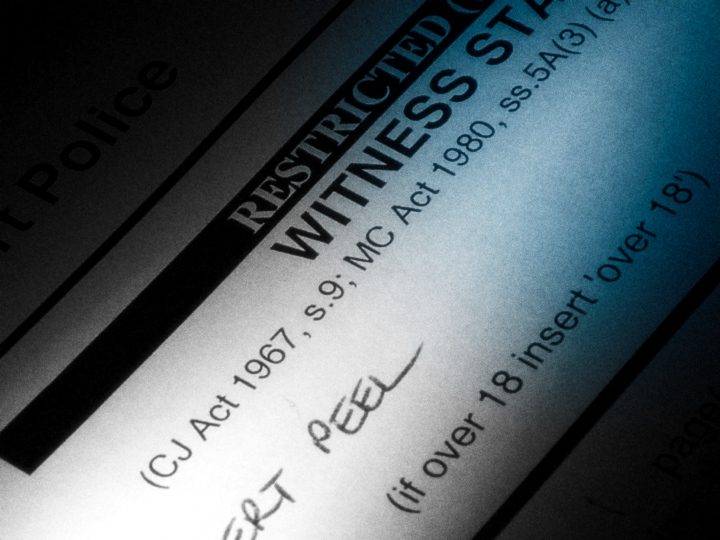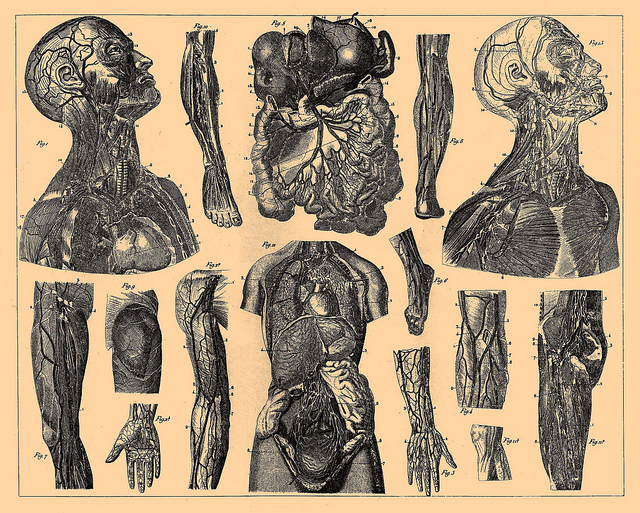
The Use of Hypnosis in Criminal Investigations
July 8, 2013
EU Competition Law: Article 101 of the TFEU
July 18, 2013Do you own your own body? A question you may never have considered as the obvious answer would be: ‘yes, of course I do.’ Well, in law, the position is counter-intuitive. The default rule is that there are no property rights in the human body; this is well established in the law of the UK and further afield. Most people live quite happily without ever having to consider the implications of this. However, for others, the consequences of being unable to own your body, parts of it or its products can lead to very undesirable results.
Do you own your own body? A question you may never have considered as the obvious answer would be: ‘yes, of course I do.’
The human body is subject to constant and increasingly complex developments in science and medicine. These bring with them new questions of law and the courts can find themselves confronted with the task deciding how to handle new medical developments. Do they continue to apply the same body of rules that were founded decades before doctors performed the first successful organ transplant? Or do they adapt the regime to better cater for the realities of modern day medicine and technology?
Reproductive technology has undergone very significant developments with the ever increasing capability of science to overcome a couple or an individual’s inability to conceive naturally. One recent leap forward in this field is the development of three-person IVF, which allows scientists to create an embryo from the cells of three people. An embryo used in any IVF process exists in vitro, meaning it is formed outside of the body and can be kept for a specific period of time, which is defined by statute.
Because of its independent existence, legal questions have arisen regarding control of an embryo and its usage rights, which would normally belong to the person who owned it. However, because such ownership is prohibited, the law has sidestepped the need to deal with the question of property and, instead, has dealt with embryos and their use under the umbrella of consent.
This article considers whether the current framework of consent is satisfactory or whether it is preferable to extend the law of property to parts of the human body and, specifically, to reproductive material. However, it is first necessary to consider the existing legal landscape regarding the status of the human body.
The current state of the law
The question of what legal interests a person might have in their own body can arise in a multitude of different situations, in addition to those in the sphere of reproduction. For example, when considering whether it is possible to sell parts of one’s own body or whether research institutions can be granted intellectual property rights over cells and DNA.
The law in the UK, and in other jurisdictions, has not developed a consistent approach to establishing the legal status of the human body. The general prohibition against property rights in the human body originated in the context of corpses, but was extended over the centuries. Cases such as R v Bentham [2005] 1 WLR 1057 confirm living bodies are also included. In this peculiar case, the defendant committed a robbery giving the impression that his hand, which was concealed in his jacket, was a gun. He was charged with possession of an imitation firearm, but because he could not be said to be in possession of a part of his own body, the conviction was overturned by the House of Lords.
The law in the UK…has not developed a consistent approach to establishing the legal status of the human body
An exception to this rigid prohibition emerged at the turn of the nineteenth century with the Australian case of Doodeward v Spence (1908) 6 CLR 496. This concerned a dispute over a two-headed foetus, which had been preserved and bought for an exhibition. The court held that it could be distinguished from a corpse because of the lawful exercise of work and skill that had been rendered to the foetus in order to preserve it. This allowed a property right to vest in the person who performed the procedure and it entitled them to keep the material in their possession. This rule was confirmed in R v Kelly [1999] 2 WLR 384 where it was held that parts of a human corpse could be property for the purposes of the Theft Act 1968 if they had acquired different attributes by the process of preservation or dissection.
As science and medicine have developed, so too has the breadth of this exception and cases concerning intellectual property rights over the human body are illustrative of the unsatisfactory predicament that the law finds itself in. In the American case of Moore v Regents of the University of California 793 P 2d 479 (Cal 1990), Mr Moore was a sufferer of the rare hairy cell leukaemia and he brought an action against researchers from a university who had taken a sample of cells from his spleen and, from this, had created the MO cell line (aptly named after Mr Moore).
They obtained a patent over the MO cell line, which they sold to a drug company for $15,000,000. Mr Moore claimed his property had been converted and, therefore, he was entitled to a share of the proceeds. However, it was held that Mr Moore’s spleen was not his property so, while he could claim for breach of fiduciary duty and a lack of informed consent, he could not claim for the consequences of the conversion. It was the researchers who were held to own the cell line over which they had been granted a patent because of their application of skill to Mr Moore’s original cells.[1]
So to summarise so far, the law has us in the following rather unsatisfactory situation: I do not have a property right in my own body, but another person has the ability to generate a property right in products from my body.
One of the primary arguments for not allowing ownership of the human body is the risk of exploitation. That is, by recognising such a right we may find ourselves on the slippery slope back to slavery and other such sordid practices from our past that we would rather forget. There is a problem with this argument though. We are left in a position where we cannot exploit ourselves. So, I cannot sell my organs to bring myself out of poverty, for example, but others can exploit me by making parts of my body their own (and in some cases, make a fortune out of doing so!).
Such was the position until the case of Yearworth v North Bristol NHS Trust [2009] 3 WLR 118 where the Court of Appeal recognised a property right belonging to the claimants over their own sperm. This is clearly a leap forward towards embracing a property-based model, although its value is debatable. We will return to this case more fully after examining the particular legal position of embryos.
Embryos
An embryo is unique in that it is not a product of the human body, but a product of two people’s bodies and now, possibly three.
An embryo is formed when the male sperm cell and female egg cell fuse together during fertilisation. In a normal IVF procedure, the embryo is created in vitro (outside of the body) and is then transplanted into the woman, but recent advances in science have paved the way for a third person to be included in the process.
Mitochondria are organelles found inside cells which generate its supply of energy and control its metabolism. Abnormalities with the mitochondria can cause a range of diseases and conditions as a result of the body’s cells being unable to function properly. Mitochondria are contained in the mother’s egg cell, not the father’s sperm, so to prevent a woman passing on her defective mitochondria to her baby, scientists have developed methods to transfer her genetic material into a healthy donor egg.
Under the current law, an embryo falls under the regulation of the Human Fertilisation and Embryology Act 1990 (HEFA) as amended by HEFA 2008 and, as mentioned previously, this legislation deals with the control and use of the embryos under the umbrella of consent rather than property. Schedule 3 of the Act sets out the requirements of valid consent that each party contributing gametes to the embryo must give for its use and storage.
Is an embryo close enough in nature to gametes that it could be extended to recognising a property right over an embryo?
The consent based system effectively gives each party a veto over the use of the embryo, but does not give them a positive right to dictate the terms of its use. While it appears to neatly sidestep the need to address the question of ownership, the case of Evans and others v Amicus Healthcare [2003] EWHC 261 demonstrates how a system based on mutual consent between parties is less than satisfactory because it opens itself up to stalemate should any conflict arise.
Ms Evans intended to undergo IVF treatment with her partner, but while the embryos were in storage, the couple separated and her partner withdrew his consent to the storage and use of the embryos. The Court of Appeal rejected Ms Evans’ application for an injunction that required her partner to restore his consent to storage and use so she could lawfully have the embryos transferred.
The consent originally given referred to treatment of the patients ‘together’ with a partner and it was held that such treatment was not possible with consent from one party only. Ms Evans continued to fight her case up to the Grand Chamber of the European Court of Human Rights, with the argument that the UK legislation violated her Article 8, 12 and 14 Convention rights, but these arguments also failed.
This is clearly an unsatisfactory situation for three key reasons: the woman wishing to be pregnant has been denied her chance of motherhood, the embryos have been destroyed and a considerable amount of money has been wasted. These risks would arguably only be intensified by the involvement of a third party, but this problem could be mitigated if the law gave one party a right to control the embryo. Consequently, it would also afford greater protection to an embryo, which is a important argument for those who believe that they ought to be considered a human life.
So would the Yearworth decision be able to help here? Is an embryo close enough in nature to gametes that it could be extended to recognising a property right over an embryo?
The Yearworth decision and its legacy
In this case, six men who had been diagnosed with cancer were advised that their fertility would likely be affected during the chemotherapy treatment they were due to undertake and the hospital offered to freeze samples of their sperm for use at a later date. Each man had their sperm stored in this way for an agreed ten year period. However, before it could be used, the freezer broke down and the samples were destroyed.
The men brought three arguments before the Court of Appeal. First, that they suffered personal injuries caused by negligence on the part of the hospital. Second, that they suffered damage to property because of negligence. Third, that they suffered loss resulting from the hospital’s breach of bailment conditions. The hospital contended that while they had owed a duty to take reasonable care of the sperm and had failed to do so, they were not liable because the claimants could not recover for either personal injury or damage to property in negligence because the destruction of the sperm was not damage to their ‘person’.
The court rejected the claimant’s personal injury argument, but did allow the other grounds of appeal holding that the men did have ownership of their own sperm and could therefore sue the hospital for damages for their negligent destruction of it.
Case comment
This decision is positive for the primary reason that it recognises that parts of the human body may be subject to property rights outside of the Doodeward exception of the application of labour or skill. However, the decision does not definitively pave the way for a more general extension of property rights in the human body.
Additionally, legal recognition of ownership over embryos would require a decision on who the ownership right would belong to.
Yearworth has been criticised for jumping to find a property right over the sperm without identifying an underlying principle upon which this right is founded. Without a firm justification for finding the property right, the court took something of a leap into the unknown and this lacking foundation arguably makes Yearworth an undesirable precedent.[2] Importantly, we are left wondering whether the property paradigm has been extended to gametes only or whether it can rolled out to other reproductive bodily materials or more widely to non-reproductive organs and tissues.
Additionally, legal recognition of ownership over embryos would require a decision on who the ownership right would belong to. There is justification for it vesting it in the woman undergoing treatment because of the fact that the reproductive process is not as burdensome on a man as it is on a woman. Biologically, a man’s role is limited to the act of fertilisation and from that moment onwards, the woman bears the burden of gestation through to labour and child birth. Conferring ownership of the embryo to the woman could go some way to address this imbalance.
Conclusion
To conclude, the legal status of the human body and its parts and products is less than ideal. While in some ways the Yearworth decision was a step in the right direction in terms of recognising property rights in the body, the gaps left by the Court of Appeal have denied us a clear authority on which to base a doctrinal change in the body’s legal status.
Yet the existing uncertainties and contradictions inherent in the current legal landscape are in need of clarification and change. The time may not be right yet and perhaps the courts alone should not be faced with the burden, but as science and medicine continue to progress the law must ensure that it is able to progress with them.
[1] For a full account of this case and judicial treatment of it in America, see Radhika Rao, ‘Genes and Spleens: Property, Contract, or Privacy Rights in the Human Body?’ American Journal of Law, Medicine and Ethics 341 (Fall 2007)
[2] For a full account of this argument, see Shawn H.E Harmon and Graeme T. Laurie, ‘Yearworth v North Bristol NHS Trust: Property, Principles, Precedents and Paradigms’ Cambridge Law Journal 69 (3) 2010





